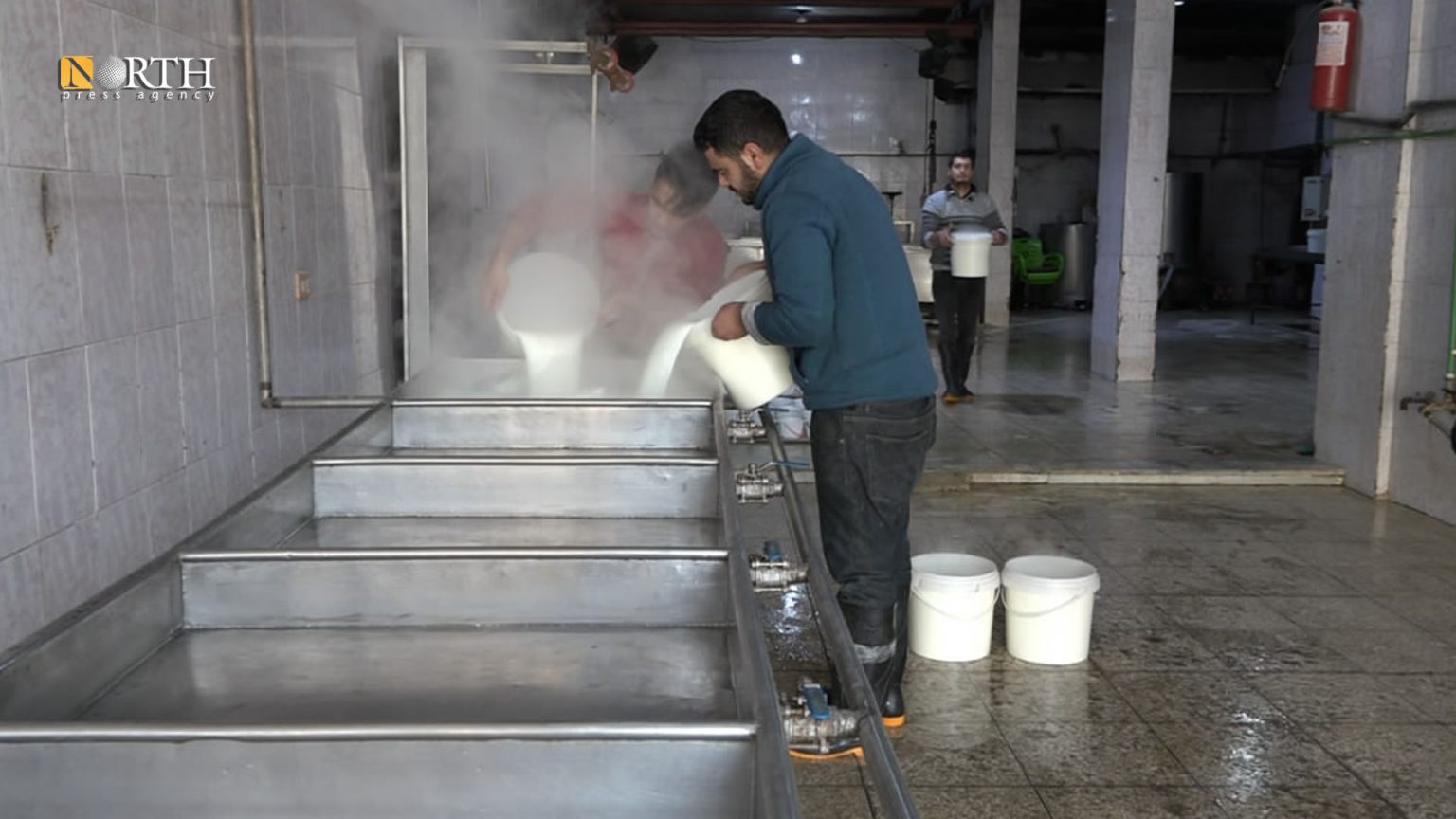Muhammad Hamam, the owner of two yoghurt manufacturing facilities in Manbij city in northern Syria, hopes that the milk collected from villages and transported to his yoghurt plant every day is sufficient for the day’s production.
Hamam has got two plants: one is in Manbij city and the other is in Kobani, northern Syria.
However, the quantity milk production in cattle is low, accordingly, prices of goods in Hamam’s own plants have increased.
High cost of production, transportation and high wages of workers are also reasons why prices of goods produced in the yoghurt plants increased.
Yoghurt manufacturers attribute decline of production to seasonal reasons, low production in winter in general, decrease of fuel and high cost of production.
There are seven accredited yoghurt manufacturing facilities in Manbij, all of them produce milk derivatives like butter, yoghurt, cheese and butter ghee among others.
Production in the times of drought
Hamam buys one kg of milk for 1,200 Syrian pounds (SYP). However, the price of milk differs according to its quality.
The deficiency of rainfall, the cut off water by Turkey, [and] the economic deteriorating conditions in general are all key reasons why cattle production declined.
The throughput in Hamam’s yoghurt plant is approximately one ton of milk derivatives. Up to 20 types of cheese and sheep/cow yoghurt are manufactured on a daily basis.
Once you enter the plant, various kinds of cheese, butter, yoghurt and butter ghee attract your attention. Some of them are sold in cans or plastic bags, while others are laid on the table in bowls.
Hamam listed the prices in his own plant as saying: 4 kg of yoghurt is sold for 5,000 SYP, 1 kg of milk is sold for 1,400 SYP, 1 kg of fresh cheese is sold for 8,000 SYP, 1 kg of butter is sold for 20,000 SYP, 1 kg of cow butter ghee is sold for 20,000 SYP bur the sheep butter ghee is sold for 30.
Inside the plant in Manbij, ten workers are tasked to boil milk, cool it and package the various products. Each one of the worker earns 10,000-15,000 SYP per day according to their specialty.
Shortage of fuel
Abdurrahman Hamza, the owner of a yoghurt plant in the village of Kherfan, eastern Manbij, says the prominent problem his plant faces is the shortage of diesel. “The quantity of diesel designated for the plant is insufficient and the power situations in the village is not good, so we are sometimes forced to buy diesel from the black market.”
In turn, Muhammad Jamil, co-chair of the fuel directorate in Manbij, stated to North Press that the yoghurt manufacturing facilities do not get sufficient amount of diesel as the directorate itself suffers pressure.
“The diesel problem will be solved as soon as they finish distributing it,” he said.
The fuel directorate in Manbij offers 1,200 or 2,200 liter of diesel, for 110 SYP per liter, to the yoghurt plants every 15 days.
Hamza’s operates 24 hours to be able to produce various types of milk derivatives but Hamam said they are unable to meet the people’s demands due to the shortage of milk amount.
Different reasons
Hassan al-Hajjaj, a cattle breeder from Manbij, said it is normal that amounts of milk decline in winter specially that currently they feed the cattle just to survive.
Low temperature affects the production of milk notably now it is time for the cattle to rest before giving birth to new lambs and calves.
Agriculture productions, notably flour and cattle feed, have reduced in northeast Syria due to drought and closure of border crossings.
Muhammad Bakro, a worker in Manbij, told North Press that prices of yoghurt and cheese are too high. “Only the rich can afford them.”
“Low income people and daily hire workers cannot afford them. One kilogram of fresh cheese costs the wage of two executive days without being able to afford other needs like vegetables or bread,” Bakro said.
Bakro called the supply directorate to fix the prices and control them so that they are affordable for consumers.

